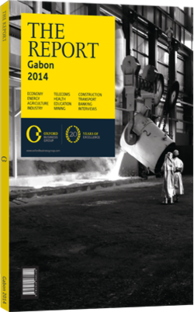OBG talks to Takao Omori, CEO, Portek International

Interview: Takao Omori
To what extent do West and Central Africa need improved port infrastructure?
TAKAO OMORI: The West African network is one of the most in need of regional trans-shipment centres, with Côte d’Ivoire and Nigeria both offering possibilities. The West African market could also contain the Central African regions, which might be serviced by hubs at Pointe-Noire, for instance. However, Tanger Med, which is a major transfer centre that covers north-south and east-west trade, could also serve the role of a regional hybrid hub and a gateway port to cover demand in the hinterland and trans-shipment activity to other feeder ports.
From a regional perspective, the capital expenses required for dredging and widening channels should be driven more by the volume of local needs rather than the volume of trans-shipment needs, which is decided by considering yield per box on feeder loops. Shipping companies have the flexibility to deploy the most appropriately sized feeder vessels to improve yield per box and calling sequences.
Thanks to comparatively higher productivity at Libreville’s terminal at the port of Owendo, some shipping companies are planning on using vessels with a capacity of more than 5000 twenty-foot equivalent unit (TEU) via Tanger Med to Libreville. Additionally, improvements in dimension and efficiency in West and Central Africa would significantly reduce port fees.
How would you rate ancillary infrastructure in West and Central African ports?
OMORI: Considering that the origin and destination ports are in such high population density areas, port-related costs are higher than costs associated with ancillary infrastructure in West and Central Africa. Instead, railway should be necessary for bulk and mining industries if they are to serve the hinterland. Efficient logistics continuously stimulates industry and creates enough volume to justify greater investment. For container terminal operation, we care as much about containers’ content as ensuring productivity in terms of how many containers we move. It really changes the perspective on how ports operate and ensures we share benefits with stakeholders.
What measures could help reduce vessel turnaround time in African ports?
OMORI: One good example is Portek, which started in 1988 as an engineering company for port equipment and is now a niche terminal operator. Gabon Ports Management, a wholly owned subsidiary of Portek, introduced two mobile harbour cranes in 2012 and one in 2013 at Owendo’s port. They dramatically improved productivity, which rose from 10.2 TEUs per hour per vessel to 20 TEUs per hour per vessel. It also lowered the wait time from 8.3 days to 4.5 days and reduced dwell time from two days to less than one day. Some shipping lines have changed vessels to non-geared ones and now enjoy faster loading and unloading time.
How effective are public-private partnerships (PPPs) in improving port efficiency and ensuring the long-term viability of projects?
OMORI: Although PPPs are powerful initiatives that maintain a fluid relationship between the public and private sectors, they are not necessarily able to attract private direct investment. The balance between the willingness of private investors to build large infrastructure and the ability of the government to offer a fair return and protection for investment is challenging. Our expansion plans are targeted at ensuring a positive contribution to our partners, and public parties should provide investment incentives.
Efficient ancillary infrastructure and Customs processes will create the impetus for transport volume to grow, as it stimulates consumption and improves the local economy. Attracting private investors and protecting the interests of the public are often regarded as being in conflict, but if private and public partners are able to complement each other and if they share a long-term vision, the interests of both sides can be aligned.
You have reached the limit of premium articles you can view for free.
Choose from the options below to purchase print or digital editions of our Reports. You can also purchase a website subscription giving you unlimited access to all of our Reports online for 12 months.
If you have already purchased this Report or have a website subscription, please login to continue.

